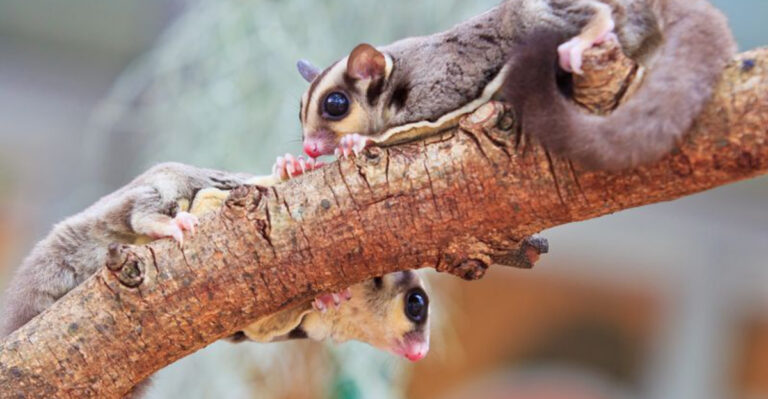14 U.S. National Forests Where Black Bears Roam Freely (And What You Should Do If You Meet One)

Imagine hiking through towering pines when suddenly you spot a dark, furry figure moving between trees ahead. Black bears inhabit many of America’s most beautiful national forests, creating both excitement and caution for outdoor enthusiasts.
Understanding where these magnificent creatures live and how to react during an encounter isn’t just fascinating – it could be the difference between a great story and a dangerous situation.
1. Pisgah National Forest, North Carolina
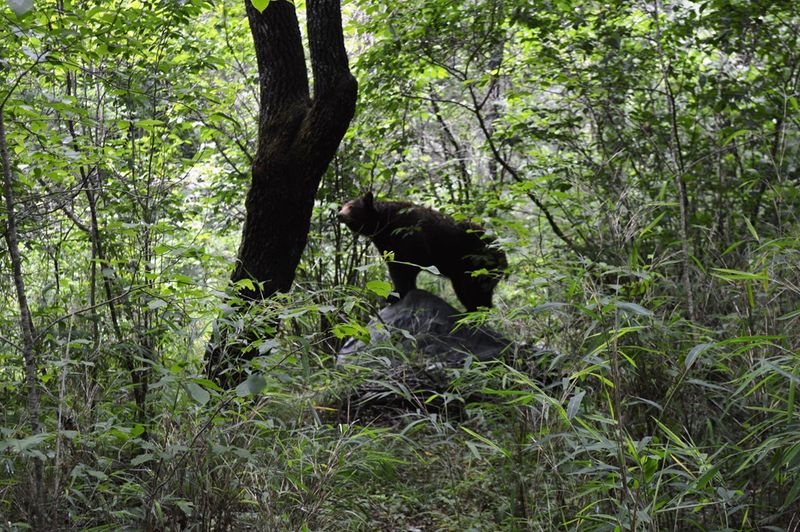
Home to one of the densest black bear populations in the Southeast, this Appalachian wonderland offers more than just stunning waterfalls. The lush forest canopy provides perfect cover for these stealthy mammals.
Rangers estimate one bear per square mile in some areas, making sightings common during summer berry season.
2. Bridger-Teton National Forest, Wyoming
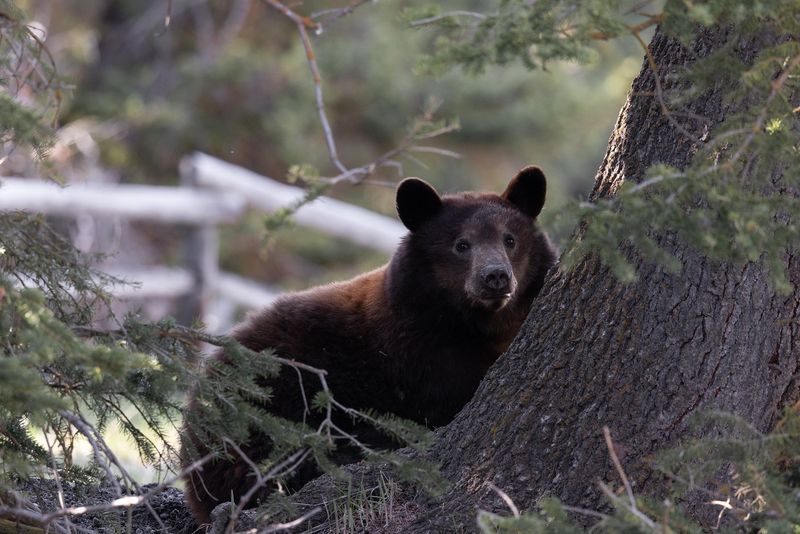
Sprawling across 3.4 million acres near Yellowstone, this wild expanse harbors a thriving bear community. Glacier-carved valleys and alpine meadows create perfect habitat for bears fattening up on berries and nuts.
The forest’s remote character means these bears tend to be less habituated to humans than in more visited parks.
3. Tongass National Forest, Alaska

Misty rainforests and salmon-rich streams make this America’s largest national forest a paradise for black bears. Unlike their northern brown cousins, these forest-dwellers prefer the dense coastal woodlands.
Fall brings spectacular viewing opportunities as bears congregate along waterways to feast on spawning salmon before winter hibernation.
4. Superior National Forest, Minnesota
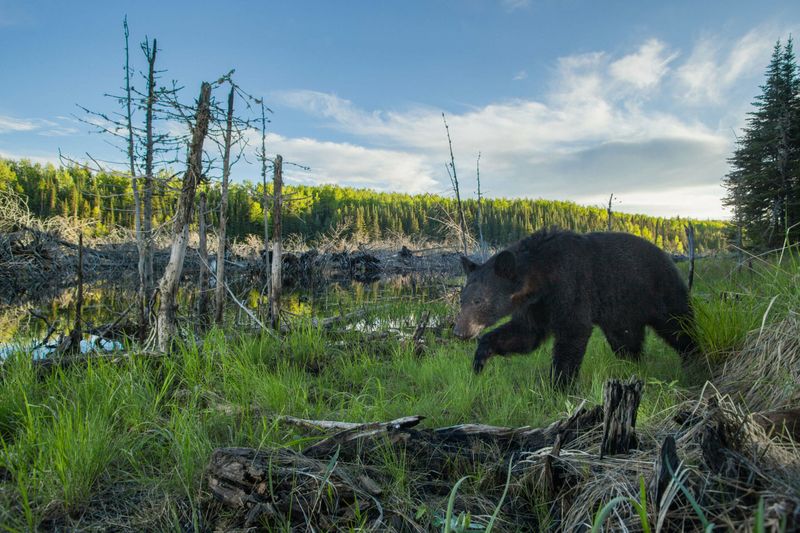
Nestled against the Canadian border, this forest’s interconnected waterways and island-dotted lakes create ideal bear territory. Berry patches and abandoned beaver ponds become bear dining halls during summer months.
The famous Boundary Waters Canoe Area within the forest offers paddlers occasional glimpses of bears swimming between islands.
5. Cherokee National Forest, Tennessee
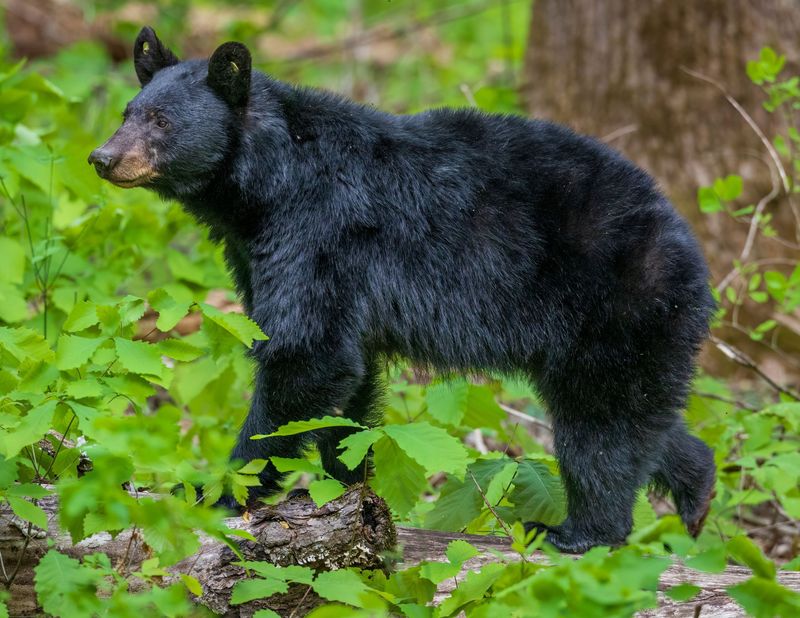
Straddling the Appalachian Mountains, this forest’s oak and hickory trees produce bumper crops of nuts that black bears can’t resist. The rugged terrain provides secluded denning sites away from human disturbance.
Morning hikers along the Appalachian Trail sections here occasionally spot bears foraging in mountain meadows filled with wildflowers.
6. Chippewa National Forest, Minnesota
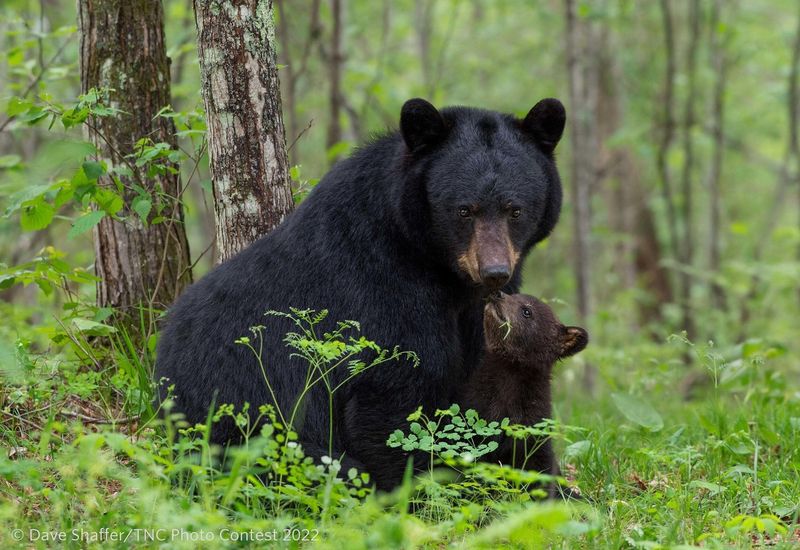
Famous for its ancient red and white pines, this northern forest creates a perfect sanctuary for shy black bears. Over 1,300 lakes and ponds scattered throughout provide critical water sources during hot summer months.
Lucky visitors might spot cubs climbing trees – a behavior mother bears encourage to keep youngsters safe from predators and competing males.
7. Shoshone National Forest, Wyoming
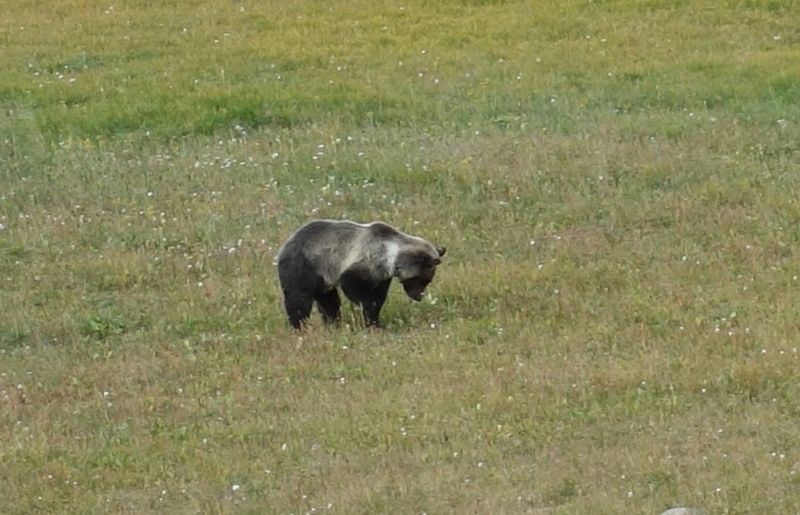
America’s first national forest remains wild and untamed, with black bears sharing territory with their larger grizzly cousins. High-elevation meadows burst with berries and roots that bears dig up with powerful claws.
The dramatic range of habitats, from sagebrush to alpine zones, supports diverse food sources that bears follow seasonally.
8. Nantahala National Forest, North Carolina
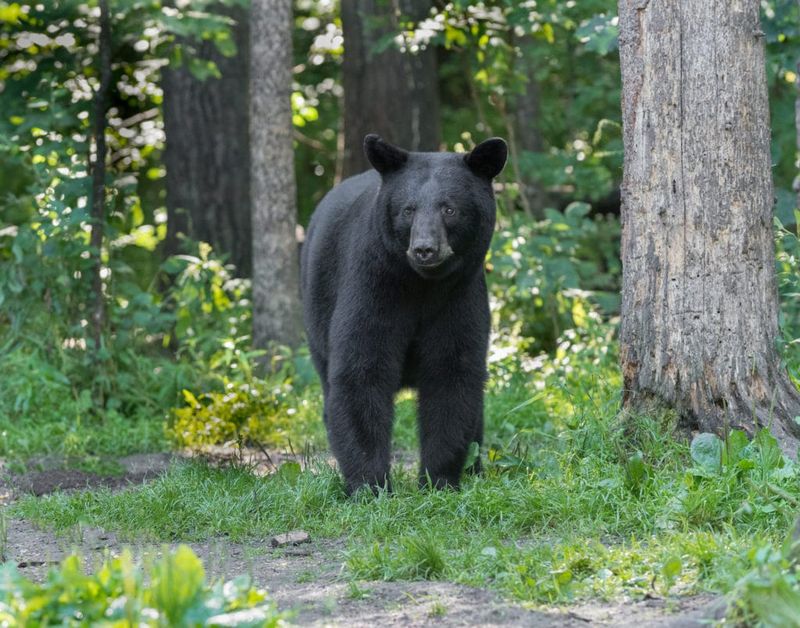
The name means “land of the noonday sun” in Cherokee, referring to the deep gorges where sunlight only reaches midday. These shadowy valleys provide perfect cover for black bears moving between feeding areas.
Fall brings bears into chestnut oak stands where they gorge on acorns, sometimes climbing trees to reach the richest branches.
9. Ocala National Forest, Florida
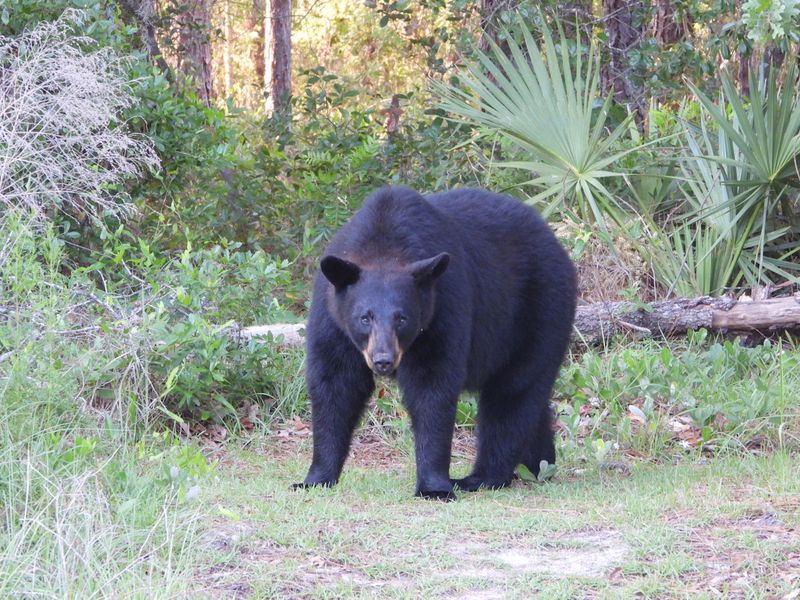
Surprising to many visitors, this subtropical forest hosts a unique population of Florida black bears. Smaller than their northern relatives, these bears thrive among palm trees and sandy soil.
Spring brings bears into open scrub areas where they feast on saw palmetto berries, often leaving distinctive tracks in the sandy forest roads.
10. Chequamegon-Nicolet National Forest, Wisconsin
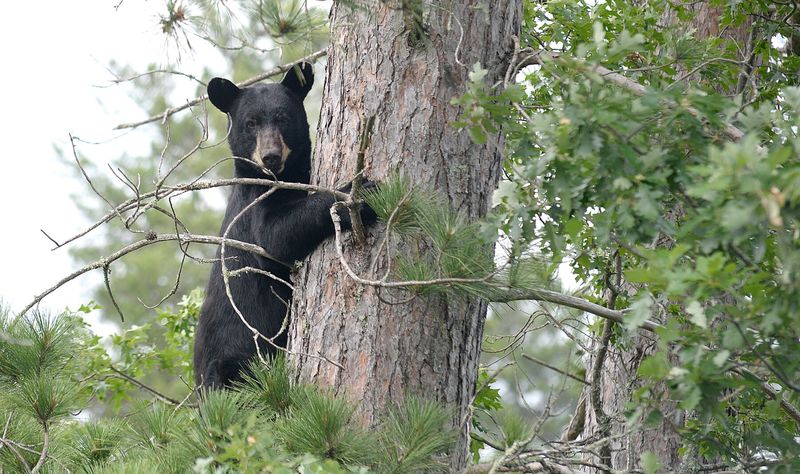
Spanning over 1.5 million acres across northern Wisconsin, this forest’s diverse habitats support a growing black bear population. Extensive wetlands and hardwood forests create perfect conditions for berry patches and beehives – both bear favorites.
Autumn brings bears into oak stands where they can gain up to five pounds daily eating acorns before winter sleep.
11. Mark Twain National Forest, Missouri

Ozark Mountain hollows and oak-hickory forests create hidden corridors for the growing black bear population in this Midwestern forest. Once nearly extinct in Missouri, bears have made a remarkable comeback in recent decades.
Remote sections along the Eleven Point River offer occasional glimpses of bears cooling off in summer heat or fishing for crayfish.
12. Gifford Pinchot National Forest, Washington
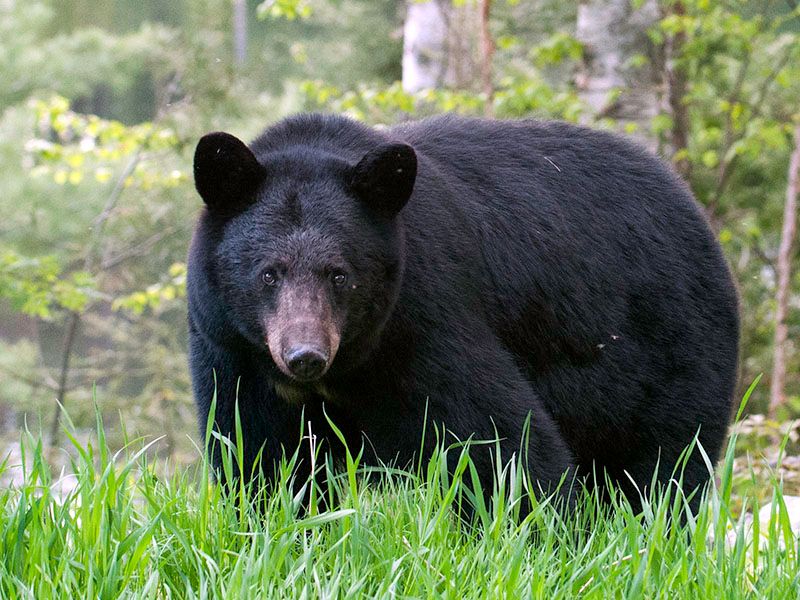
Shadowed by volcanic Mount St. Helens, this Pacific Northwest forest provides rich habitat for black bears among ancient Douglas firs. The blast zone’s remarkable recovery now attracts bears to feast on the explosion of berries growing in open areas.
Bears here sometimes develop unique cinnamon-colored coats, creating confusion with grizzlies among inexperienced hikers.
13. White Mountain National Forest, New Hampshire

Granite peaks and maple-beech forests create a New England haven for black bears across this 800,000-acre wilderness. Berry patches at higher elevations draw bears upslope in summer, creating surprise encounters for peak-bagging hikers.
The forest’s famous fall foliage season coincides with bears’ intense pre-hibernation feeding period, making September sightings common near wild apple trees.
14. Monongahela National Forest, West Virginia

Hidden in the heart of Appalachia, this forest’s remote hollows and spruce-covered mountains shelter a healthy black bear population. Ancient rock formations create perfect winter denning caves where females give birth during deep winter sleep.
The forest’s famous Dolly Sods Wilderness, with its wind-swept plains, attracts bears to feast on blueberry thickets in late summer.




